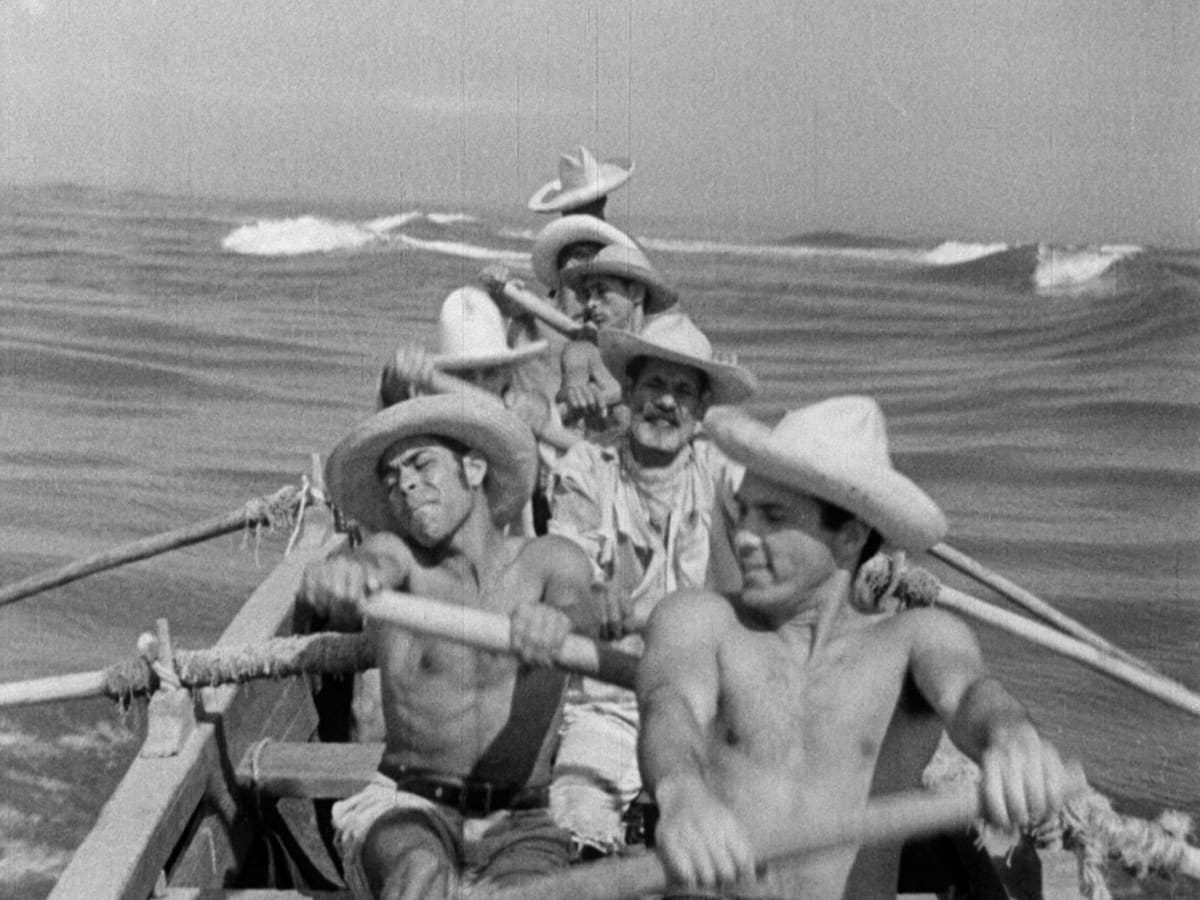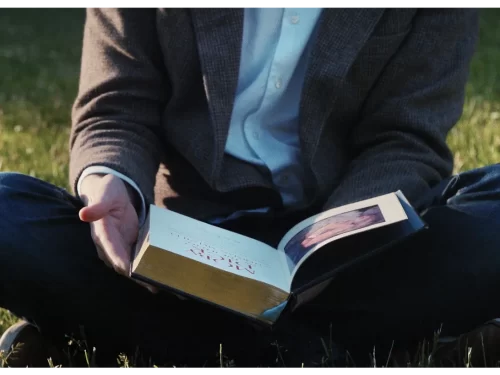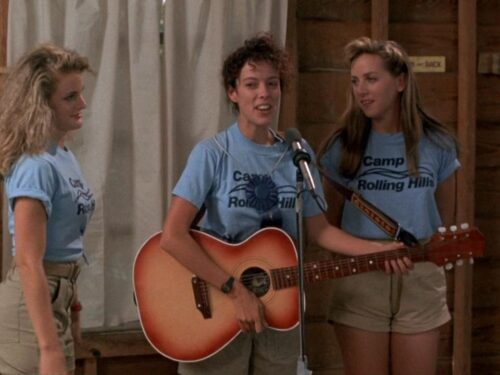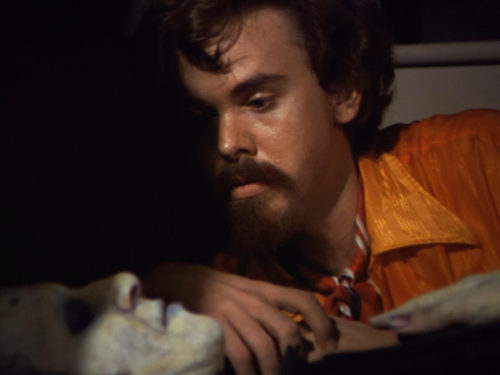A decade before Italian neorealism, Redes broke social and stylistic boundaries in its depiction of the political awakening of a small fishing village in Mexico
By the 1930s, Mexican cinema had entered its golden age. The Mexican Revolution, a decade-long civil war that unfolded from 1910 to 1920, was the ideological inspiration for this era’s most acclaimed work. Fernando de Fuentes’ revolution trilogy — Prisoner 13 (1933), Godfather Mendoza (1934), and Let’s Go with Pancho Villa (1936) — dramatize the fight for a democratic Mexico, which centered on the issue of populist demands for land reform. For 30 years, the dictatorship of Porfirio Díaz (1884-1911) served the interests of agricultural concerns and wealthy landowners, and this enabled these parties to take the farmland of the Indigenous Mexicans who sustained themselves from it. The administration of President Lázaro Cárdenas (1934-1940) redistributed land to indigenous peasants, amid other broadly speaking leftist policies that included nationalizing foreign-owned oil companies and empowering unions. And during this period, Mexico’s state-subsidized filmmaking industry reinforced the populist ideals of the revolution, either by historicizing it (as in de Fuentes’ films) or by producing films sympathetic to these ideals. One of these was Fred Zinnemann and Emilio Gómez Muriel’s Redes (1936).
Redes, sometimes translated as The Wave, is about the exploitation and radicalization of a small fishing village near Veracruz, Mexico. The film’s protagonist, Miro (Silvio Hernández), has a deathly ill son, and he cannot afford to pay for the medication the boy needs with the pittance that he and the other fishermen are paid by their local don. Miro appeals to the businessman for a loan, but he is denied under the pretense that times are tough. The tragic consequence is that the boy dies, leaving Miro and his family broken. Yet Miro must continue providing for his family, so he heads back out to sea with the other fishermen, and they manage to pull in a large haul. When they get to shore, these men are paid almost nothing for their labor, which leads to a moment of radicalization. Miro brings the fishermen together, urging them to organize for autonomy over their working conditions, and this is met with ardent applause by most of the workers. Crucially, not all of the fishermen are on board. When it comes time for the workers to revolt, some of them side with their boss. A fight between the men breaks out, and in the midst of this Miro is fatally, and covertly, shot by a politician working hand-in-hand with the don. The fishermen who revolted flee and take Miro with them, while the others who betrayed their comrades are offered next to nothing. This treatment prompts the final moment of political awakening in the film, where these workers finally unite with their brothers in the pursuit of revolution making.

Redes is characterized by an uncanny humanism, where each and every frame feels simultaneously real and otherworldly. The cast is composed almost entirely of non-professional actors, many of whom were actual fishermen. This, combined with the use of long takes and location shooting, makes it possible to understand Redes as a forebear to Italian neorealism. The film’s style gives a particular weight to the events that unfold, in that what we are watching feels that it matters more than the film itself. When we see the men cast their nets into the sea, we hope with them that they will be able to sustain themselves from their labor. Yet we also understand that this is simply not the reality of their working conditions — as long as they do not exercise control over them, the fishermen will never be paid what their labor is worth. What the film records is not a documentary, but we know what we are seeing is real. It is happening even as we watch the film, all over the world, whether in the context of a fishing village or not.
The first shots of Redes direct our attention to bustling waves, with the sunlight pouring over them as clouds lazily hang over the sea in the background. The image feels both quotidian and mythic: It is awesome to behold, even though it is a common sight for plenty of people. But perhaps the familiarity and ordinariness of this vision is what makes it so arresting.When casting our eyes on this vista in Redes or a comparable one in real life, it is almost impossible to accept that our world can be made of such natural beauty while we spend so little of our lives being able to appreciate the divinity of it. At least with Redes, we are afforded the opportunity to reflect on this magnificence, even to consider its timelessness. Indeed, while looking out on the ocean, sun, and sky, the viewer is tempted to consider their own, personal transience in this world. Each generation casts its eye on the same image, so to speak, and each is left trembling before it. Hence, when the camera pans to the left, we see Miro standing in the surf about to cast his net, alone and desperate. He watches the water, trying to find the right spot and moment to strike. This could just as well be a moment of quiet prayer as Miro hopes to pull what he needs from below the surface to get him and his family through. Alas, his reward is a single fish that he looks over — for what, we cannot possibly know — before throwing it back into the sea. The next image is the same shot of the sun, clouds, and waves but from a different angle. Nothing has changed from the opening shot to this one. The natural world is just as beautiful, and just as unyielding.

These early moments establish the film’s dominant visual and thematic note: strife, and the pain and beauty that come from that. There is no more compelling expression of this theme than the sequence when Miro addresses his comrades, where he articulates the imbalance of power that has been placed on them, culminating with the heroic line, “Poverty is not the law of nature, nor is it God’s law,” which is met with resounding applause by the other fishermen. For this speech, Zinnemann and Gómez Muriel make incredible use of Soviet-style montage: As Miro asks why it is that the fisherman are paid so little and are unable to barter their catch with other workers for different goods and services, the outflow of labor-related images give life to what Miro says. The montage consists of cattle being herded, stalks of corn gently swaying in the sun, a man stringing fabric together by hand. The directors begin by fading in on the cows in motion moving from left to right, and combined with the sky and clouds gracing the background, Zinnemann and Gómez Muriel associate the cows with the waves from the early moments of the film — the implication being that the workers of the world control the movements of history. Workers are tame and transform the world; they are the builders of civilization.
In Redes, nature can be unyielding, but the fishermen have a mythic connection to it. In seeing the men coordinate themselves to pull in their catch, to see them fight against nature, is to behold something heroic. And in this, Zinnemann and Gómez Muriel accomplish an impressive task in their depiction of the fishermen. We are not made to come to a simple conclusion about these men, where we accept that the only way for them to realize their own humanity is for them to labor in excruciating and exploitative conditions for no gain. What we see is precisely the opposite: We glimpse the beauty of their collective work and their expression of the human spirit, of what people are capable of doing to transform the world around themselves, and all of this despite the fact that they toil for nothing. Zinnemann and Gómez Muriel need us to understand that the fishermen are being abused by the local boss; however, they do not want that analysis to distract from the humanity of the men. They are not simply the poor, unfortunate victims of a cruel and unforgiving system — above all, they are men, they are people, and they are capable of incredible things. The film doesn’t define them entirely by their oppression. If nothing else, it shows us that to rush into such categorization often means to forget the actual complexities of revolution that Redes is so attentive to.
In contrast, the boss is presented in a much more stereotypical and uncomplicated light, which is fitting for the film’s thematic and ideological message. During the montage, we see the image of the boss, shown from a low angle looking up. His round stomach is in full view in the foreground as he looks offscreen, implicitly surveying the fishermen at work — or, for that matter, of any worker. In this way, the don is associated with stasis. He does not move, he is not a worker, and he can never experience or be party to the heroic expression of humanity that the working fishermen evince. Quite simply, he is an imposing presence in the frame, taking up all of it and barely blocking out the sky. In all of his statuesque and imperious presence, he must be toppled if there can be any movement, if there can be any progress for these fishermen. Not only is he imposing in the frame, but the boss is also the reason that the sea and sky cannot be appreciated for their beauty. Under his control, the natural world has been turned into an imposition upon the fisherman, into work that is alienating. His presence in the film, and what it means for these men, is as common and recognizable as the sea and sky.
But what Redes accomplishes so well is the complication of this very thesis, of the idea that the situation facing these fishermen (and by extension, all workers) is easy to recognize. We see this in how the men react to the prospect of starting their own revolution and realizing better working conditions for themselves. In one sense, it is incredibly heartening to see these fishermen so inspired by their leader’s words, and there is genuine beauty to how Zinneman, Gómez Muriel, and cinematographer Paul Strand capture the individual within the collective. There is a particularly striking moment when Miro is giving the speech, decrying how hard it is for the fishermen to afford medicine. By this point, of course, Miro’s son has already died, so this sentiment carries a personal sting but clearly a broader one, too. His son is not the only one who has died because the workers could not afford medicine, and this child will not be the last unless something changes. This point is made brilliantly clear in a reaction shot of one of the fishermen as Miro is speaking. This man obviously understands where Miro is coming from, and in this man’s face we are left to contemplate the vastness of the tragedy of worker exploitation: It manifests in such silent glances and looks, where it is not always a matter of a worker articulating their thoughts or even manifestly agreeing with the notion of agitating for change. This reaction shot shows how deeply the eternal struggle has been absorbed into the body and mind of the working class, and how much they feel the weight of the abuse that they suffer. But this means, also, that there is always the potential to activate and animate workers, just as the wind graces the sea and sets history into motion.

Redes is available to stream on The Criterion Channel
Redes can be purchased as part of the Martin Scorsese’s World Cinema Project No. 1 boxset
Stay up to date with all things Split Tooth Media and follow Frankie on Twitter
(Split Tooth may earn a commission from purchases made through affiliate links on our site.)




